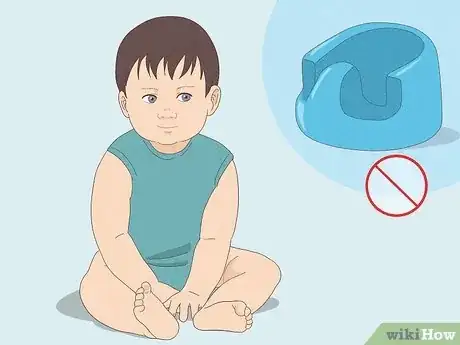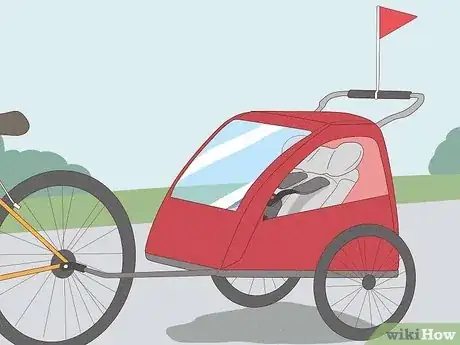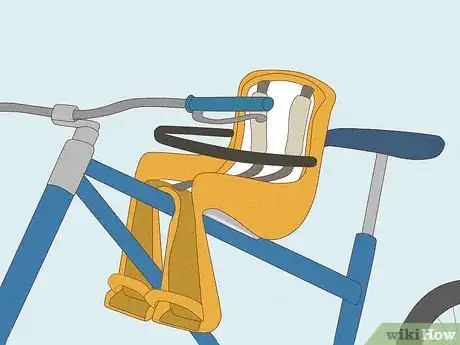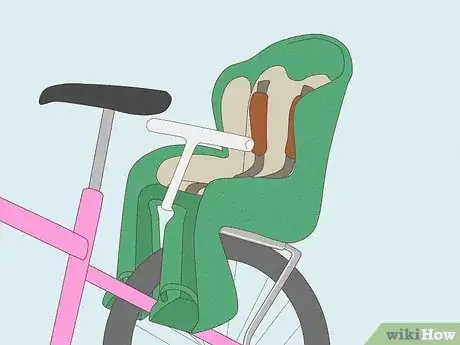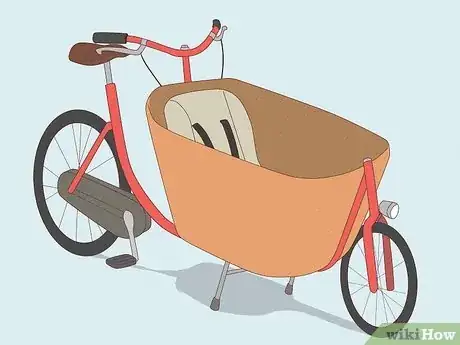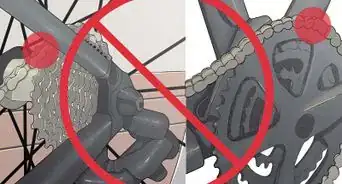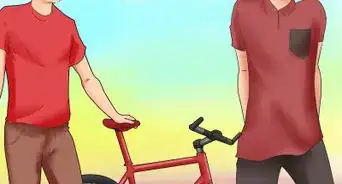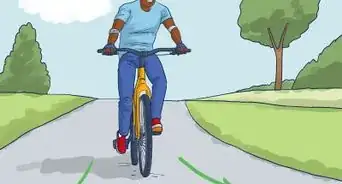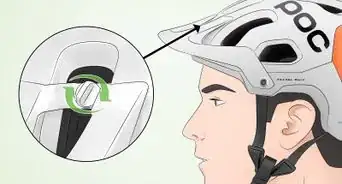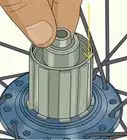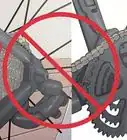This article was co-authored by wikiHow staff writer, Christopher M. Osborne, PhD. Christopher Osborne has been a wikiHow Content Creator since 2015. He is also a historian who holds a PhD from The University of Notre Dame and has taught at universities in and around Pittsburgh, PA. His scholarly publications and presentations focus on his research interests in early American history, but Chris also enjoys the challenges and rewards of writing wikiHow articles on a wide range of subjects.
There are 8 references cited in this article, which can be found at the bottom of the page.
This article has been viewed 2,908 times.
Learn more...
Biking with a newborn or infant sounds like a fun way to get outdoors and bond with your baby. But at what age can a baby safely ride along on a bike? And what’s the best way to bike with a baby when they are old enough? You have questions, and we have the answers you need so you can safely and confidently hit the road and have some fun along with your child.
Steps
Expert Q&A
-
QuestionIs it safer to bike on the sidewalk?
 Jonas JackelJonas Jackel is the Owner of Huckleberry Bicycles, a bicycle retail store based in San Francisco, California. Jonas has over 20 years of experience managing bicycle retail stores and has operated Huckleberry Bicycles since 2011. Huckleberry Bicycles specializes in servicing, repairing, and custom building road, cross, gravel, touring, folding, and e-bikes. Jonas was also previously sat on the Board of Directors for Bike East Bay, a bicycle-advocacy non-profit organization based in Oakland, California.
Jonas JackelJonas Jackel is the Owner of Huckleberry Bicycles, a bicycle retail store based in San Francisco, California. Jonas has over 20 years of experience managing bicycle retail stores and has operated Huckleberry Bicycles since 2011. Huckleberry Bicycles specializes in servicing, repairing, and custom building road, cross, gravel, touring, folding, and e-bikes. Jonas was also previously sat on the Board of Directors for Bike East Bay, a bicycle-advocacy non-profit organization based in Oakland, California.
Owner, Huckleberry Bicycles It might sound counter-intuitive, but it's actually more dangerous to ride your bike on the sidewalk. People are walking on the sidewalk, and people could step out of buildings at any time. It's safer to ride on the road.
It might sound counter-intuitive, but it's actually more dangerous to ride your bike on the sidewalk. People are walking on the sidewalk, and people could step out of buildings at any time. It's safer to ride on the road.
Warnings
- It may be tempting to strap a baby carrier to your chest or back and go for a bike ride, but safety experts advise against this option, and you should avoid it. Why?[16]
- They don’t provide any protection to your baby.
- They position your child in such a way that it’s difficult for them to keep their head from bobbing around while you’re biking, even if they have adequate neck strength.
- Your center-of-balance and/or pedaling and steering ability may be unexpectedly affected, especially if your child is moving around.
- If you crash and fall off your bike, your body weight could seriously injure your child.
⧼thumbs_response⧽
References
- ↑ https://www.healthychildren.org/English/safety-prevention/at-play/Pages/Baby-On-Board-Keeping-Safe-On-A-Bike.aspx
- ↑ https://www.bhsi.org/little1s.htm
- ↑ https://www.bhsi.org/cpscstd.pdf
- ↑ https://www.cyclinguk.org/guide/guide-to-child-bike-seats
- ↑ http://totcycle.com/blog/baby-on-a-bicycle.html
- ↑ https://www.healthychildren.org/English/safety-prevention/at-play/Pages/Baby-On-Board-Keeping-Safe-On-A-Bike.aspx
- ↑ https://www.bhsi.org/little1s.htm
- ↑ https://www.bhsi.org/little1s.htm
- ↑ https://www.cyclinguk.org/guide/guide-to-child-bike-seats
- ↑ https://www.cyclinguk.org/article/cycling-guide/guide-cargo-bikes
- ↑ https://health.clevelandclinic.org/how-to-pick-the-best-bicycle-helmet-for-your-child-2/
- ↑ https://www.healthychildren.org/English/safety-prevention/at-play/Pages/Baby-On-Board-Keeping-Safe-On-A-Bike.aspx
- ↑ https://www.consumerreports.org/cro/bike-trailers/buying-guide/index.htm
- ↑ https://www.consumerreports.org/cro/bike-trailers/buying-guide/index.htm
- ↑ https://www.consumerreports.org/cro/bike-trailers/buying-guide/index.htm
- ↑ https://www.healthychildren.org/English/safety-prevention/at-play/Pages/Baby-On-Board-Keeping-Safe-On-A-Bike.aspx

